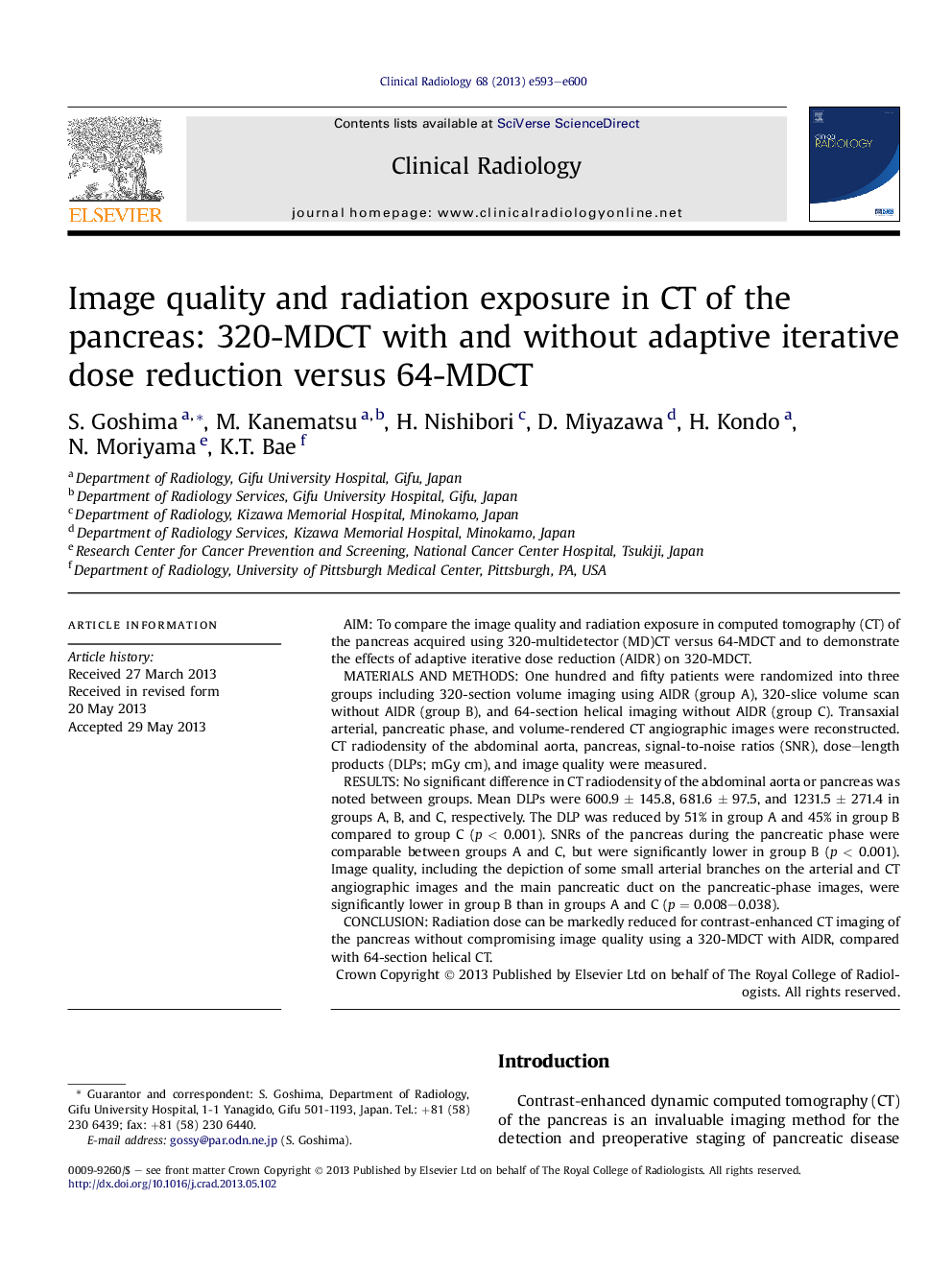| Article ID | Journal | Published Year | Pages | File Type |
|---|---|---|---|---|
| 6191027 | Clinical Radiology | 2013 | 8 Pages |
AimTo compare the image quality and radiation exposure in computed tomography (CT) of the pancreas acquired using 320-multidetector (MD)CT versus 64-MDCT and to demonstrate the effects of adaptive iterative dose reduction (AIDR) on 320-MDCT.Materials and methodsOne hundred and fifty patients were randomized into three groups including 320-section volume imaging using AIDR (group A), 320-slice volume scan without AIDR (group B), and 64-section helical imaging without AIDR (group C). Transaxial arterial, pancreatic phase, and volume-rendered CT angiographic images were reconstructed. CT radiodensity of the abdominal aorta, pancreas, signal-to-noise ratios (SNR), dose-length products (DLPs; mGy cm), and image quality were measured.ResultsNo significant difference in CT radiodensity of the abdominal aorta or pancreas was noted between groups. Mean DLPs were 600.9 ± 145.8, 681.6 ± 97.5, and 1231.5 ± 271.4 in groups A, B, and C, respectively. The DLP was reduced by 51% in group A and 45% in group B compared to group C (p < 0.001). SNRs of the pancreas during the pancreatic phase were comparable between groups A and C, but were significantly lower in group B (p < 0.001). Image quality, including the depiction of some small arterial branches on the arterial and CT angiographic images and the main pancreatic duct on the pancreatic-phase images, were significantly lower in group B than in groups A and C (p = 0.008-0.038).ConclusionRadiation dose can be markedly reduced for contrast-enhanced CT imaging of the pancreas without compromising image quality using a 320-MDCT with AIDR, compared with 64-section helical CT.
